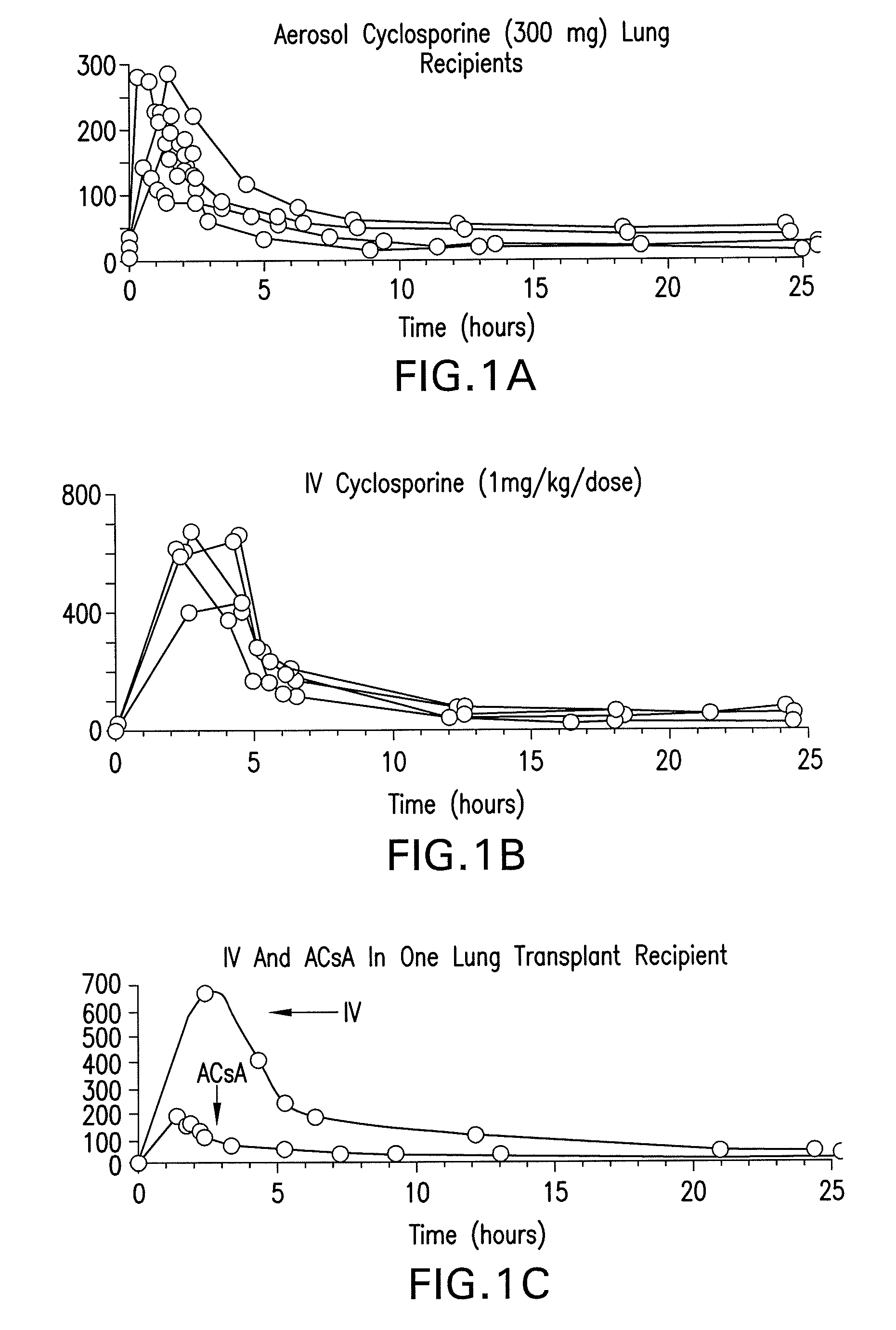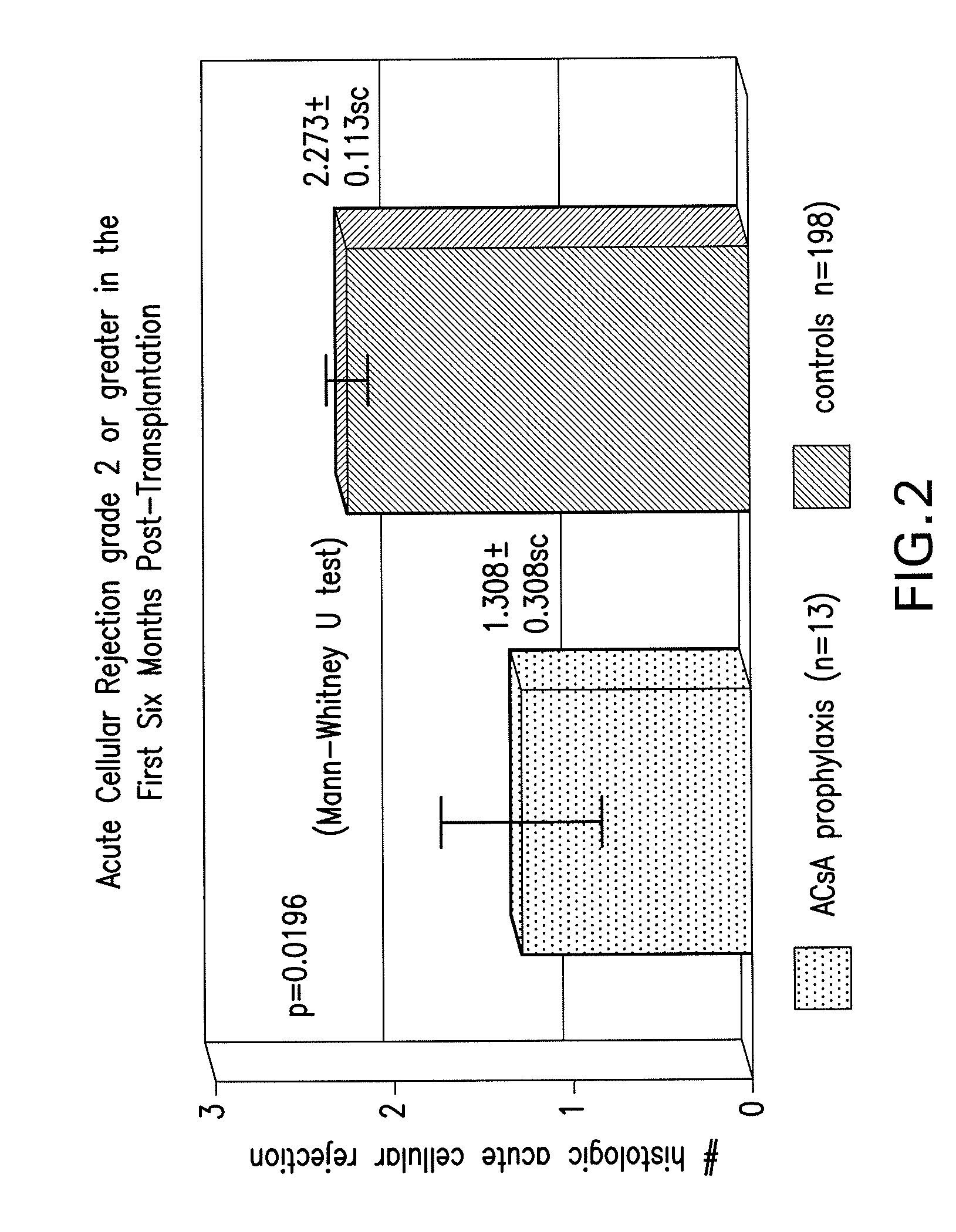Use of aerosolized cyclosporine for prevention and treatment of pulmonary disease
a technology of cyclosporine and pulmonary disease, which is applied in the direction of aerosol delivery, immunological disorders, peptide/protein ingredients, etc., can solve the problems of excessive morbidity and mortality, limited long-term success of lung transplantation, and poor longer-term outcomes. , to achieve the effect of reducing toxicity and susceptibility to life-threatening conditions, preventing acute rejection, and preventing graft rejection
- Summary
- Abstract
- Description
- Claims
- Application Information
AI Technical Summary
Benefits of technology
Problems solved by technology
Method used
Image
Examples
Embodiment Construction
[0019]The present invention relates to methods for preventing graft rejection in lung transplant recipients wherein said methods comprise the administration of aerosolized cyclosporine directly following lung transplantation. The invention further relates to methods for ameliorating inflammation in subjects having inflammatory pulmonary disorders using aerosolized cyclosporine. Subjects treated with aerosolized cyclosporine have reduced pulmonary inflammation due to a cyclosporine mediated decrease in inflammatory cytokines in the lung.
[0020]The methods of the invention provide a means for ameliorating pulmonary disorders through direct delivery of the immunosuppressive agent cyclosporine to the lung while avoiding the toxicity associated with systemic use of cyclosporine, or other systemic immunosuppressive drugs that frequently cause toxicity and infection.
[0021]5.1. Use of Aerosolized Cyclosporine for Prevention of Rejection in Lung Transplant Recipients
[0022]The present inventio...
PUM
| Property | Measurement | Unit |
|---|---|---|
| size | aaaaa | aaaaa |
| size | aaaaa | aaaaa |
| size | aaaaa | aaaaa |
Abstract
Description
Claims
Application Information
 Login to View More
Login to View More - R&D
- Intellectual Property
- Life Sciences
- Materials
- Tech Scout
- Unparalleled Data Quality
- Higher Quality Content
- 60% Fewer Hallucinations
Browse by: Latest US Patents, China's latest patents, Technical Efficacy Thesaurus, Application Domain, Technology Topic, Popular Technical Reports.
© 2025 PatSnap. All rights reserved.Legal|Privacy policy|Modern Slavery Act Transparency Statement|Sitemap|About US| Contact US: help@patsnap.com



